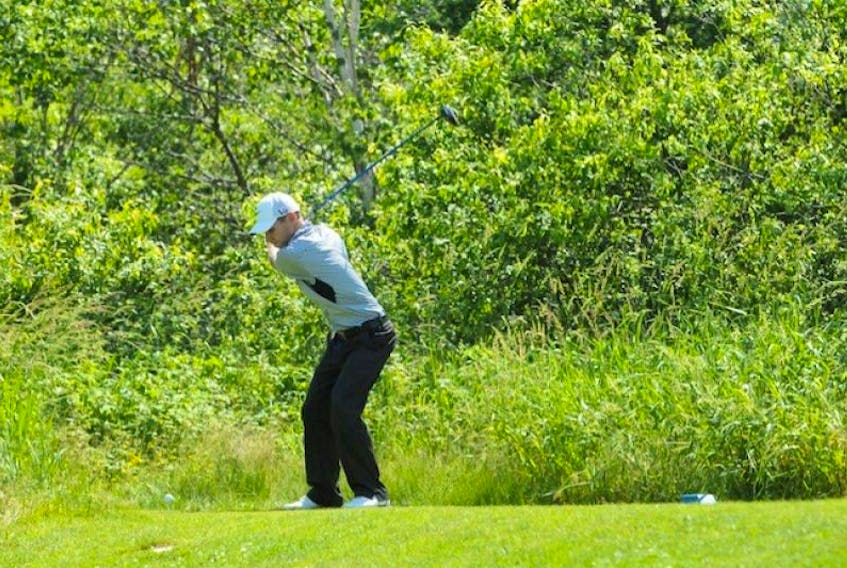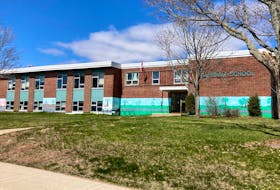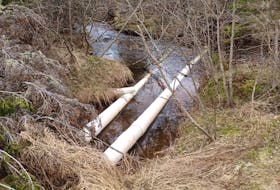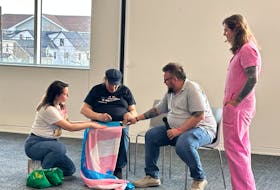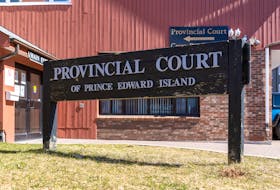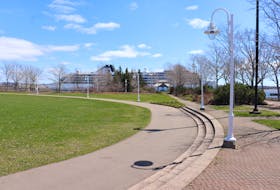Roughly 25 years ago, the province took a real shine to golf as a tool to draw tourists to P.E.I.
With the sport booming across North America in the 1990s, the government decided to make golf development a centerpiece of its tourism and economic development strategies.
A new research report from the Atlantic Institute for Market Studies (AIMS) concludes the efforts were largely a flop — and quite a costly one at that.
The paper, called Short of the Green: Golf as an Economic Development tool on Prince Edward Island, states that the Crown corporation created specifically to operate provincially owned courses has lost money in 10 of the last 14 years.
In 2008, the province finally wrote off more than $10 million in bad debt on Golf Links’ books.
CLICK HERE FOR MORE EXAMPLES OF GOLF'S STRUGGLES AND FAILURES
“The strategy may have seemed compelling,’’ says Ian Munro, the report’s author, “but a combination of bad luck and strategic missteps resulted in a policy failure.’’
The report also finds that a number of basic but critical strategic questions were overshadowed by enthusiasm, hype and optimism at the beginning of the golf boom in the 1990s.
The report questions why the government took on the roles — and risks — of golf course owner and operator, rather than focus on providing a sound basis environment in which entrepreneurs could do what they do best.
“Additionally, tactical errors were made in relying on simplistic projections, failing to consider risks and alternative scenarios, and justifying investment decisions on the basis of unsound or inappropriate analyses,’’ the report states.
The report highlights the major development of the golf product in P.E.I., noting the province may well have been the “epicentre’’ of the 1990s golf boom in Canada.
Prior to 1990, there were 11 golf courses on the Island.
From 1990 to 2003, 20 new courses were opened across the province.
No new courses have opened since 2003.
AIMS believes some developers may have made a strategic error in that many new courses featured high degrees of difficulty, high maintenance costs and high fees.
“Many recreational players might try such courses once or twice, but the allure of spending a lot of money to endure several hours of disappointing results and intense frustration quickly wears off,’’ AIMS speculates in its 29-page report.
Also, the report determined that the economics of supply and demand has hurt the golf industry in the province.
The market became oversaturated with golf courses in P.E.I., resulting in competition driving down prices, profits plummeting, and courses failing.
Golf Links P.E.I., which owns and operates the Crowbush, Brudenell, Mill River and Dundarave courses, has consistently “bled red ink.’’
The Liberal Ghiz government in 2007 decided to sell its courses, but after seven years of on-again, off-again efforts, they remain unsold.
The report also highlights that tourism statistics released in November 2014 show strong numbers for the year for overnight stays and airport traffic, yet, despite this seemingly successful year for the tourism industry, golf, as measured by total non-member rounds, was down 3.3 per cent in 2014.
“Given the trends since the turn of the millennium — financial losses, course closures, weak tourism figures, and declining numbers for the amount of golf being played — one might wonder whether the original concept of using golf to lure tourists has been turned on its head so that other means of attracting tourists now are needed to save the golf industry,’’ the report concludes.
Roughly 25 years ago, the province took a real shine to golf as a tool to draw tourists to P.E.I.
With the sport booming across North America in the 1990s, the government decided to make golf development a centerpiece of its tourism and economic development strategies.
A new research report from the Atlantic Institute for Market Studies (AIMS) concludes the efforts were largely a flop — and quite a costly one at that.
The paper, called Short of the Green: Golf as an Economic Development tool on Prince Edward Island, states that the Crown corporation created specifically to operate provincially owned courses has lost money in 10 of the last 14 years.
In 2008, the province finally wrote off more than $10 million in bad debt on Golf Links’ books.
CLICK HERE FOR MORE EXAMPLES OF GOLF'S STRUGGLES AND FAILURES
“The strategy may have seemed compelling,’’ says Ian Munro, the report’s author, “but a combination of bad luck and strategic missteps resulted in a policy failure.’’
The report also finds that a number of basic but critical strategic questions were overshadowed by enthusiasm, hype and optimism at the beginning of the golf boom in the 1990s.
The report questions why the government took on the roles — and risks — of golf course owner and operator, rather than focus on providing a sound basis environment in which entrepreneurs could do what they do best.
“Additionally, tactical errors were made in relying on simplistic projections, failing to consider risks and alternative scenarios, and justifying investment decisions on the basis of unsound or inappropriate analyses,’’ the report states.
The report highlights the major development of the golf product in P.E.I., noting the province may well have been the “epicentre’’ of the 1990s golf boom in Canada.
Prior to 1990, there were 11 golf courses on the Island.
From 1990 to 2003, 20 new courses were opened across the province.
No new courses have opened since 2003.
AIMS believes some developers may have made a strategic error in that many new courses featured high degrees of difficulty, high maintenance costs and high fees.
“Many recreational players might try such courses once or twice, but the allure of spending a lot of money to endure several hours of disappointing results and intense frustration quickly wears off,’’ AIMS speculates in its 29-page report.
Also, the report determined that the economics of supply and demand has hurt the golf industry in the province.
The market became oversaturated with golf courses in P.E.I., resulting in competition driving down prices, profits plummeting, and courses failing.
Golf Links P.E.I., which owns and operates the Crowbush, Brudenell, Mill River and Dundarave courses, has consistently “bled red ink.’’
The Liberal Ghiz government in 2007 decided to sell its courses, but after seven years of on-again, off-again efforts, they remain unsold.
The report also highlights that tourism statistics released in November 2014 show strong numbers for the year for overnight stays and airport traffic, yet, despite this seemingly successful year for the tourism industry, golf, as measured by total non-member rounds, was down 3.3 per cent in 2014.
“Given the trends since the turn of the millennium — financial losses, course closures, weak tourism figures, and declining numbers for the amount of golf being played — one might wonder whether the original concept of using golf to lure tourists has been turned on its head so that other means of attracting tourists now are needed to save the golf industry,’’ the report concludes.
Course collapse
Here is a look at the struggles and failures of some golf courses in P.E.I.
• Beaver Valley Golf Club closed in 2012 after a three-year attempt to sell the money-losing course.
• A nine-hole course called The Divine Nine that was opened by the provincial government in 1999 was shut down in 2012.
• Belvedere Golf Club announced in 2014 that it was losing money and would need to sell land for condominium development in order to remain viable.
• The province has been unable to sell any of its four golf courses since putting them on the block more than seven years ago.
• Golf Links P.E.I., which operates the provincial courses, wrote off more than $10 million in bad debt in 2008.
Source: Atlantic Institute for Market Studies

